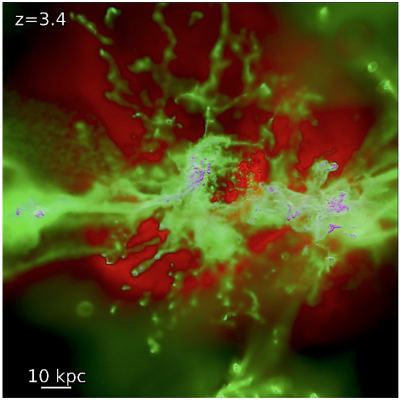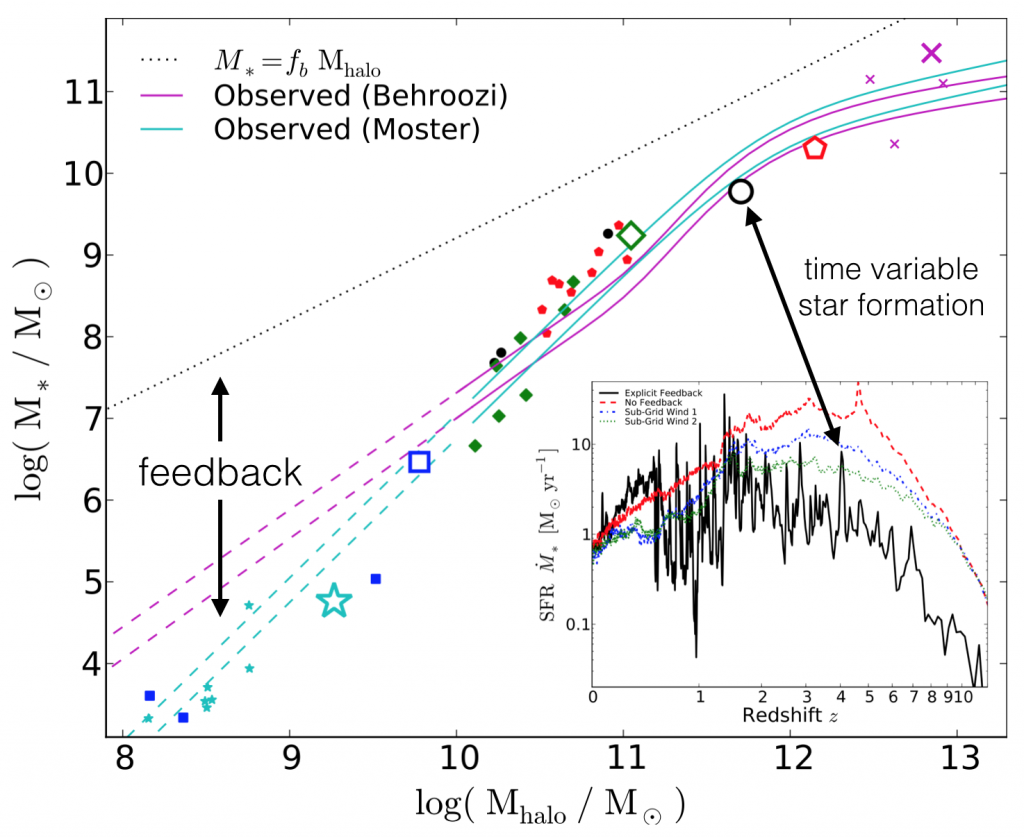Galaxies on FIRE: Stellar Feedback Explains Cosmologically Inefficient Star Formation

The first paper from the FIRE project (Hopkins et al., submitted) has been submitted for publication and posted to the arXiv!
In this paper, we focus on the stellar masses and integrated star formation properties of simulated galaxies and show that known stellar feedback processes can quantitatively explain several key observations without any parameter tuning.
Abstract: We present a series of high-resolution cosmological simulations of galaxy formation to z=0, spanning halo masses ~10^8-10^13 M_sun, and stellar masses ~10^4-10^11. Our simulations include fully explicit treatment of both the multi-phase ISM (molecular through hot) and stellar feedback. The stellar feedback inputs (energy, momentum, mass, and metal fluxes) are taken directly from stellar population models. These sources of stellar feedback, with zero adjusted parameters, reproduce the observed relation between stellar and halo mass up to M_halo~10^12 M_sun (including dwarfs, satellites, MW-mass disks, and small groups). By extension, this leads to reasonable agreement with the stellar mass function for M_star<10^11 M_sun. We predict weak redshift evolution in the M_star-M_halo relation, consistent with current constraints to z>6. We find that the M_star-M_halo relation is insensitive to numerical details, but is sensitive to the feedback physics. Simulations with only supernova feedback fail to reproduce the observed stellar masses, particularly in dwarf and high-redshift galaxies: radiative feedback (photo-heating and radiation pressure) is necessary to disrupt GMCs and enable efficient coupling of later supernovae to the gas. Star formation rates agree well with the observed Kennicutt relation at all redshifts. The galaxy-averaged Kennicutt relation is very different from the numerically imposed law for converting gas into stars in the simulation, and is instead determined by self-regulation via stellar feedback. Feedback reduces star formation rates considerably and produces a reservoir of gas that leads to rising late-time star formation histories significantly different from the halo accretion history. Feedback also produces large short-timescale variability in galactic SFRs, especially in dwarfs. Many of these properties are not captured by common ‘sub-grid’ galactic wind models.
